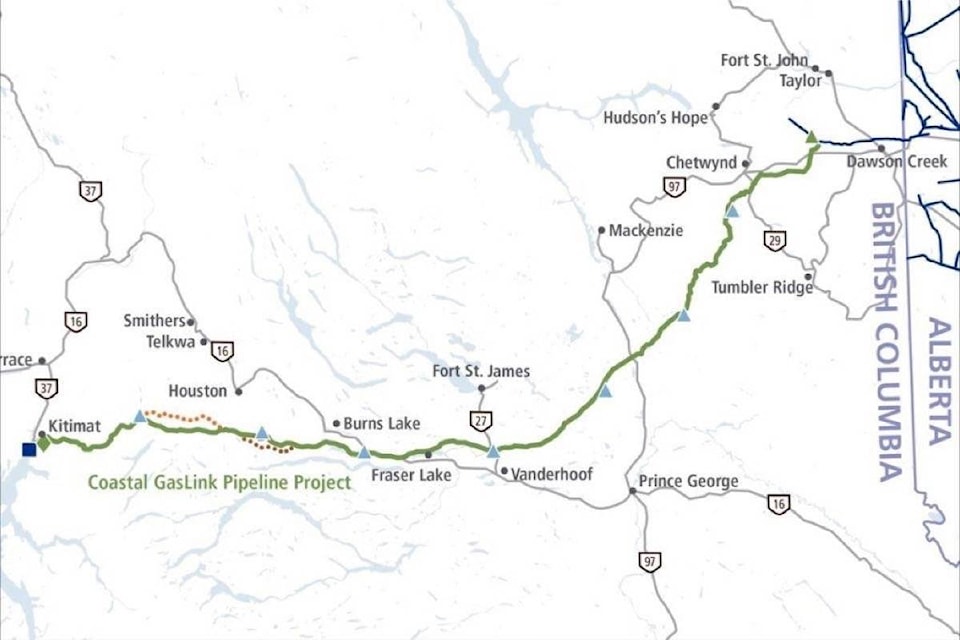The National Energy Board has rejected many of the requests for standing as it grapples with whether or not a natural gas pipeline to feed the LNG Canada liquefied natural gas plant now under construction at Kitimat falls under its jurisdiction.
In a nine-page decision dated Dec. 10, the board determined a wide range of local governments, First Nations and companies either submited information not material to the issue or that they failed to offer “a useful and unique contribution to the jurisdictional issue before the board.”
Although the 670-kilometre long Coastal GasLink natural gas pipeline, which would run from northeastern B.C. to Kitimat, has received provincial approval Smithers resident Michael Sawyer asked the National Energy Board late July to consider whether it should more properly come under its jurisdiction.
Sawyer made his argument based on plans to connect the pipeline to an existing pipeline system that does come under federal jurisdiction.
The board did grant standing to Sawyer, the federal government, the governments of B.C., Alberta and Saskatchewan as well as Coastal GasLink, the companies that would be involved in supplying natural gas, the existing federally-regulated pipeline system and the partners involved in the LNG Canada project.
Also granted standing was the environmental group Ecojustice.
“Mr. Sawyer and Ecojustice presented the most compelling arguments that they can provide the board relevant information or expertise that could best assist the board in its consideration of this matter,” the board wrote in its Dec. 10 decision.
The board has now set a schedule for approved intervenors to submit information and responses with final arguments to take place next March.
The National Energy Board did decide in October the project “may form part of a federal undertaking and could be subject to regulation under the National Energy Board Act” and so will consider the matter.
But the board has also been careful to point out the hearing “will not allow for the construction or operation of the project. Rather, if following this hearing, the board determines that it ought to take jurisdiction over the project, it would require a separate application and hold a separate hearing to determine whether to approve the project.”
The prospect of another hearing to approve the Coastal GasLink pipeline aroused worries and concerns from residents, local governments, First Nations and businesses along the pipeline route of a possible delay or cancellation of LNG Canada construction, something that would affect the northern B.C. economy.
LNG Canada did announce in October that it was proceeding with its $40 billion project at Kitimat and pre-construction work along the pipeline is underway.
A grouping of northern B.C. municipalities even released a letter expressing “disappointment” at Sawyer’s application.
Those municipalities as well as all First Nations and companies and others who filed requests for standing — 46 in all — has those requests denied.
The rejected intervenor list includes the Haisla Nation, Douglas Channel Watch in Kitimat, the District of Kitimat, the City of Terrace and Green Party MP Elizabeth May.
